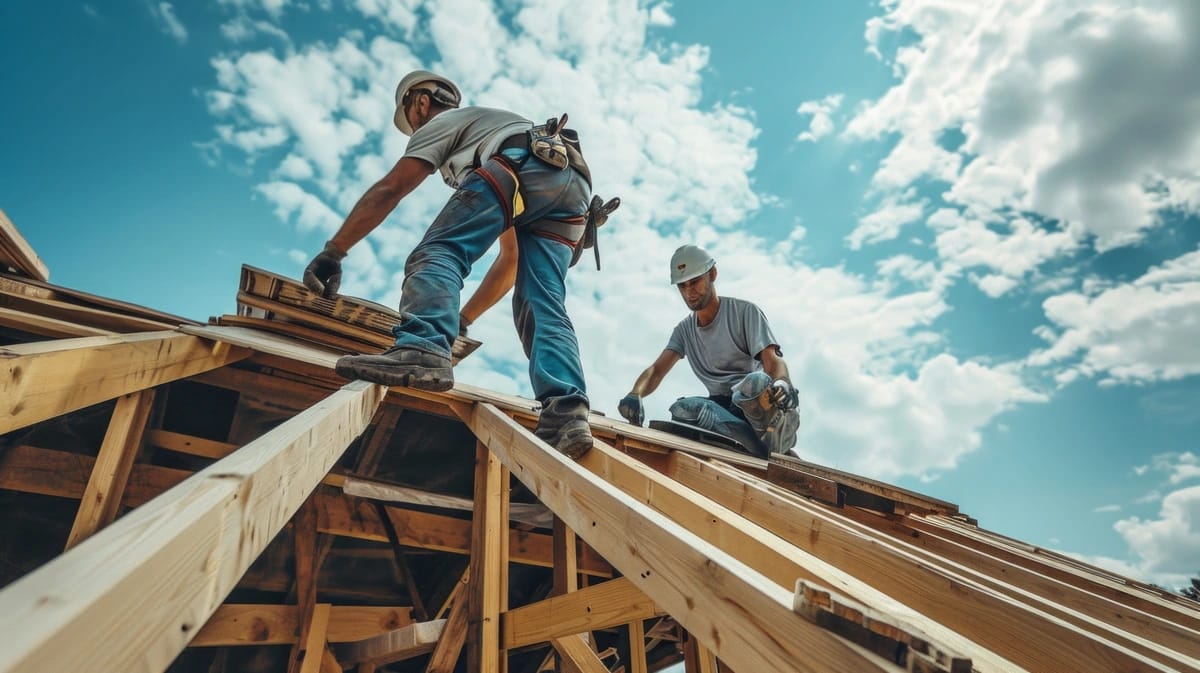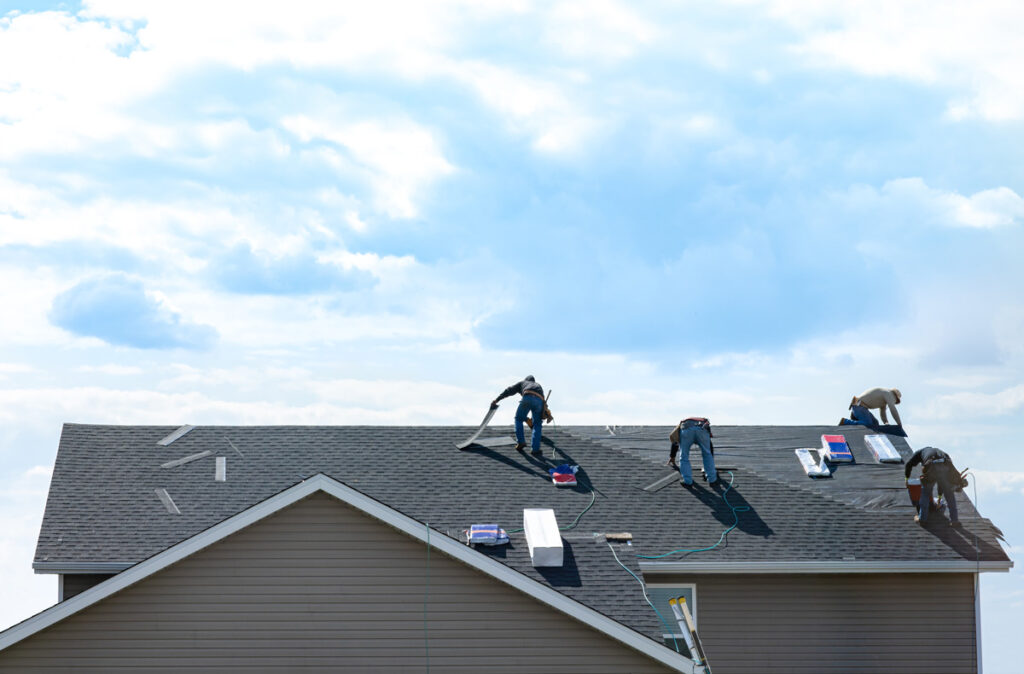Understanding the Various Kinds of Roofings: A Comprehensive Overview for Homeowners
With a range of options-- ranging from the conventional gable to the contemporary level-- each kind provides one-of-a-kind advantages and difficulties that need to straighten with the house owner's environmental considerations and particular needs. As we discover the complexities of numerous roof kinds, it becomes apparent that one size does not fit all; the right choice might stun you.
Gable Roofings
Saddleback roofs, characterized by their triangular shape, are amongst one of the most popular roofing designs due to their simplicity and efficiency in dropping water and snow. This design includes 2 sloping sides that fulfill at a ridge, enabling efficient water drainage and reducing the danger of water buildup. The steep pitch generally connected with saddleback roofs enhances their ability to handle heavy precipitation, making them appropriate for numerous climates.
Along with their useful advantages, gable roofing systems use visual adaptability. They can be adjusted to various building designs, from typical to modern-day homes. The layout can additionally fit added features such as dormer windows, which improve all-natural light and ventilation in the attic room area.
Furthermore, saddleback roofs offer ample room for insulation, adding to energy effectiveness. Home owners can pick from a range of roofing products, including asphalt roof shingles, metal, and tiles, additionally improving modification options.
Despite their advantages, saddleback roofs may need added assistance in locations prone to high winds or heavy snowfall. On the whole, the gable roof remains a popular choice due to its mix of capability, durability, and aesthetic allure.
Apartment Roofs
Flat roof coverings are typically recognized for their minimal layout and functional applications, particularly in commercial and industrial setups (oahu roofing). These roofing systems include a horizontal or virtually horizontal surface area, which permits simple building and versatile space use. While they might do not have the visual allure of pitched roofing systems, flat roofings provide many advantages, especially in city atmospheres where maximizing room is vital
Among the main advantages of flat roofing systems is their ease of access. Property owners can make use of the roof area for numerous functions, such as roof yards, balconies, or solar panel installations. Additionally, flat roofings are typically more cost-efficient to set up and keep contrasted to their sloped counterparts, as they need fewer products and labor.
Common products used for flat roof coverings include built-up roof (BUR), modified bitumen, and single-ply membranes, each offering distinctive benefits. On the whole, flat roofing systems serve as a functional and adaptable choice for numerous home owners and businesses alike.
Hip Roofs
Hip roof coverings are identified by their sloped sides that assemble on top, forming a ridge. This style stands out from gable roof coverings, as all 4 sides of a hip roofing incline downwards toward the wall surfaces, offering an extra secure framework. The angle of the inclines can differ, enabling adaptability in building aesthetic appeals and functionality.
One of the main benefits of hip roofing systems is their capacity to hold up against heavy winds and negative climate condition. The sloped surfaces enable far better water drain, reducing the threat of leaks and water damage. Furthermore, hip roofs provide boosted attic room space, which can be made use of for storage space and even exchanged livable locations.
Nevertheless, constructing a hip roofing can be more expensive and intricate than simpler roof types, such as gable roofings. The added product and labor associated with creating the slopes and making certain correct architectural integrity can lead to greater costs. Regardless of these downsides, many property owners prefer hip roofs for their toughness, visual appeal, and potential for energy performance.
Mansard Roofs
Mansard roof coverings, usually recognized by their special four-sided design, function two slopes on each side, with the reduced slope being steeper than the YOURURL.com upper. This architectural design, stemming from France in the 17th century, is not only cosmetically enticing yet practical, as it maximizes the useful area in from this source the top floorings of a building. The steep reduced incline permits more clearance, making it a perfect selection for attics or loft spaces, which can be exchanged living rooms.
Mansard roofing systems are defined by their versatility, fitting numerous building designs, from standard to contemporary. They can be created with various materials, consisting of asphalt shingles, slate, or steel, supplying property owners with a range of alternatives to match their choices and budgets. Additionally, the style enables the integration of dormer windows, enhancing all-natural light and air flow in the upper levels.
However, it is necessary to think about the potential drawbacks. Mansard roof coverings might need even more upkeep due to the intricacy of their design, and their steep slopes can be testing for snow and rainfall drainage. Overall, mansard roofs integrate beauty with practicality, making them a popular choice amongst home owners seeking distinctive architectural attributes.
Lost Roof Coverings
As house owners increasingly seek simpleness and performance in their architectural designs, lost roof coverings have actually become a popular selection. Characterized by a solitary sloping aircraft, a shed roofing presents a minimalist aesthetic that enhances various home styles, from contemporary to rustic.
Among the primary advantages of a shed roofing system is its straightforward building, which usually translates to lower labor and product expenses. This style permits effective water drain, reducing the risk of leaks and water damage. Furthermore, the vertical slope offers sufficient room for skylights, improving all-natural light within the inside.
Dropped roofing systems likewise provide versatility in terms of usage. They can be effectively integrated right into additions, garages, or outdoor structures like pavilions and sheds. Moreover, this roof covering design can fit different roofing products, consisting of metal, asphalt tiles, or perhaps green roof coverings, aligning with environment-friendly initiatives.
However, it is essential to take into consideration regional climate problems, as hefty snow tons might require adjustments to the roofing's angle or framework. Overall, shed roofing systems present a useful and cosmetically pleasing alternative for homeowners seeking to make best use of functionality without endangering style.
Verdict


Gable roof coverings, identified by their triangular shape, are amongst the most prominent roofing designs due to their simpleness and performance in shedding water and snow. oahu roofing. The steep pitch generally associated with gable roofs boosts their capability to manage heavy precipitation, making them ideal for numerous climates
While they may lack the visual charm of pitched roofings, flat roofing systems supply many benefits, particularly in metropolitan settings where making best use of room is critical.
